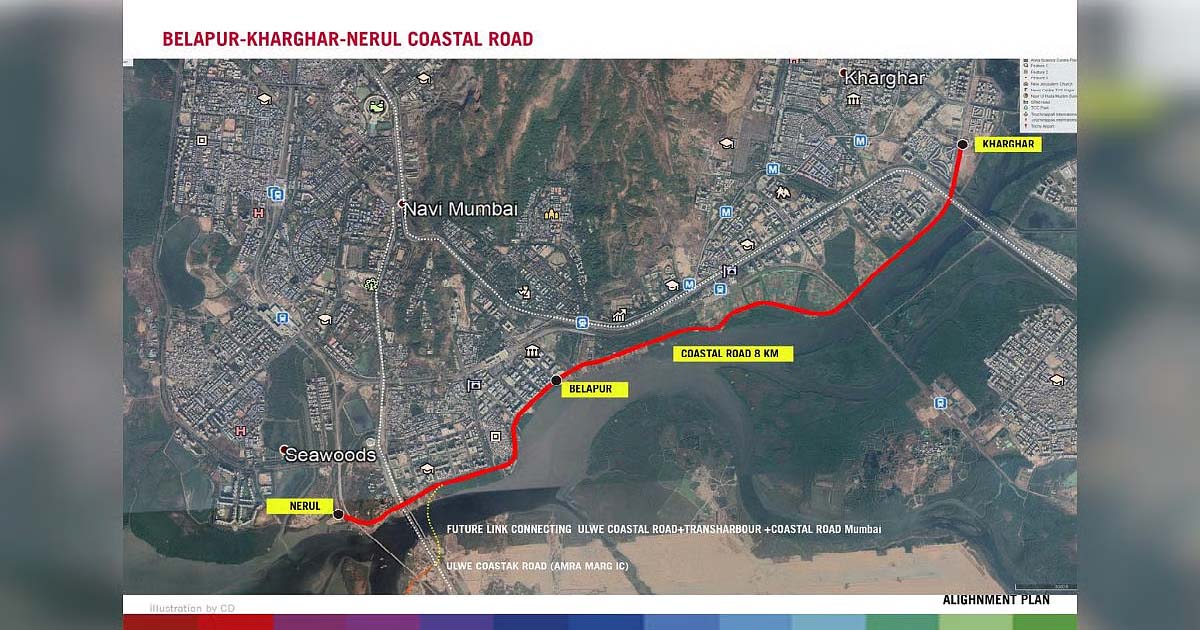Business
This is why India’s consumer market is a $1 trillion investment opportunity

The fundamentals of the Indian economy remain strong, as RBI Governor Shaktikanta Das recently stated. India’s growth rate is among the fastest in the world, retail inflation has moderated, buffer food stocks are abundant, forex reserves are substantial, and the current account deficit is expected to remain “well within sustainable levels.”
Domestic consumption is making a strong comeback, traditionally one of the main drivers of India’s economic growth. This is great news for businesses of all sizes. Simply put, when consumers spend more, businesses have more capital to invest in, and increased liquidity throughout the system energises complementary sectors and higher-end goods and services.
But what is the significance of this surge in domestic consumption?
One, as the festive season approaches, these numbers are likely to rise even more. Between August and November, when sales of everything from two-wheelers to real estate are at their peak, Indian consumers tend to spend more. Given how quickly consumption has recovered, the figures for the next three quarters will likely be even better.
Two, for better or worse, demand continues to drive India’s growth story. In a typical fiscal year, private expenditure accounts for approximately 55 per cent of the total national GDP. Furthermore, it has a significant impact on the next major growth driver, Gross Fixed Capital Formation (GFCF), which accounts for the money invested by businesses. As a result, strong domestic consumption translates unintentionally into strong economic growth.
Three, rising household consumption will boost demand for goods and services across industries, especially those involving significant amounts of “discretionary” or luxury spending. Product segments influenced by “premiumisation” trends are included in the latter. These include everything from chocolates and alcoholic beverages to laptops and headphones, as well as clothing and cosmetics. In some categories, such as automobiles, demand for premium products has outpaced demand for entry-level variants. In FY22, for example, premium car sales increased 38 per cent year on year, while lower-priced car sales increased only 7 per cent.
Why is luxury spending increasing in India?
Rising consumer incomes and purchasing power are aiding it: average per capita income has already surpassed USD 2,000 and is expected to exceed USD 12,000 by 2047. Furthermore, the rapid growth of the e-commerce sector and digital transactions has increased customer access to the luxury market. Furthermore, as consumers have become more value- and customisation-oriented, previously dominated by HNWIs, premium segments are rapidly diversifying to include Millennials and non-metro consumers. The typical cohort of HNI and NRI customers has also expanded to include affluent middle-class consumers in some segments, most notably luxury housing, due to the proliferation of remote and hybrid working models.
Furthermore, the premium product space is still in its early stages and remains largely untapped. As a result, market participants have numerous opportunities. For example, while the Indian smartphone market fell by 1 per cent year on year in H1CY22, the premium segment increased by 83 per cent. This segment, however, accounts for only 6 per cent of the total smartphone market.
As domestic consumption continues to rise, premiumisation trends will be boosted across other sectors, from quick-service restaurants (QSRs) and home products to hospitality and healthcare. This has happened before. According to Jun Nie and Andrew Palmer’s paper “Consumer Spending in China: The Past and the Future,” the threefold increase in household spending in China between 2000 and 2015 was accompanied by a sevenfold increase in spending on transportation and communication services.
So, where can investors find investment opportunities?
Discretionary consumption and premiumisation will account for a disproportionate share of growth.
Hospitality and tourism players will benefit from increased air travel, increased demand for top-tier hotels and resorts.
The automotive industry’s clientele for premium car models will become more diverse, especially as the EV revolution gains traction.
The prospects for the entertainment sector are just as promising, with people willing to pay for subscription packages and remain loyal customers even in tier-2 and tier-3 cities as long as there is content worth the money.
Companies in real estate, home-related products, and the FMCG personal care space will also benefit greatly.
The key takeaway is that Indian consumer markets will continue to be a key focus area for global public and private equity investors. Existing and new companies will generate hundreds of billions of dollars in market capitalisation.
To summarise, domestic demand will likely continue to drive India’s economic growth story, which will be increasingly influenced by the discretionary spending of a growing cohort of “premium” consumers. This trend presents an important opportunity for investors to get a head start on a veritable 21st-century gold rush.
(The views expressed in this article are personal and that of the authors. The authors head AltG, a firm that Offers Proprietary Research That Clients Leverage to Identify and Execute High Growth Capital Allocation Opportunities. You can reach them at ideas@altgind.com)
Business
Navi Mumbai: CIDCO’s 9.6-Km Kharghar Coastal Road Work To Begin In 2026, Promises Faster NMIA Connectivity By 2029

Navi Mumbai: Construction of the much-anticipated Kharghar Coastal Road — a key link that will enhance connectivity to the upcoming Navi Mumbai International Airport (NMIA) — is expected to commence in early 2026, following the receipt of mandatory forest clearances.
Planned by the City and Industrial Development Corporation (CIDCO), the 9.678-kilometre-long and 30-metre-wide arterial road will connect the airport to major nodes such as Belapur and Nerul, significantly improving regional mobility and supporting economic growth across Navi Mumbai.
The project will also provide direct high-speed access to the International Corporate Park (ICP) being developed on the lines of Bandra Kurla Complex (BKC), the Golf Course, and the FIFA-standard Centre of Excellence (COE) at Kharghar.
A grade-separated interchange over the Sion-Panvel Expressway is part of the plan to ensure smooth traffic flow and reduce congestion between the airport and nearby business and recreational hubs.
Of the total road length, 6.96 kilometres will be newly developed, while the remaining portion will integrate with the existing network. The corridor will also cater to the anticipated transport demand from upcoming projects such as the Water Transport Terminal and Pradhan Mantri Awas Yojana (PMAY) housing schemes in the area.
CIDCO has awarded the construction contract to the J Kumar–J M Mhatre Joint Venture. Officials said the project will not only boost airport connectivity but also strengthen Kharghar’s position as a major residential and commercial hub, linking it seamlessly to Taloja and Navde.
“Known for its well-planned infrastructure, green cover, and educational institutions, Kharghar is poised to witness a new phase of growth once the coastal road becomes operational. Kharghar coastal road is estimated to be ready by 2029 if everything goes as per plan,” an official from CIDCO said.
Business
Telecom operators embrace AI to bolster revenues, drive efficiency globally

New Delhi, Nov 8: Leading telecoms globally are deploying artificial intelligence (AI) across network operations, customer service, and fraud prevention to drive efficiency and reduce costs, according to a new report.
These initiatives are already contributing to EBITDA margin gains, with predictive maintenance and automated support systems leading the way, according to an IDC report.
AI also enables personalised offerings and dynamic pricing, boosting average revenue per user (ARPU) and reducing churn.
Fraud detection systems enhanced by AI are helping reduce losses, reinforcing customer trust and regulatory compliance. With AI accelerating time-to-market for new services, telecoms can better monetize emerging technologies like 5G and edge computing.
“In the longer term, as AI continues to evolve, it will be increasingly recognized not as a mere technological enhancement, but as a strategic enabler poised to drive sustainable growth for telecommunications operators,” said the report.
Meanwhile, worldwide spending on telecommunication and pay TV services is projected to reach $1,532 billion in 2025, representing an increase of +1.7 per cent year-on-year, according to the IDC report.
The latest forecast is slightly more optimistic compared to the forecast published earlier this year, as it assumes a 0.1 percentage point higher growth of the total market value.
The regional dynamics remain mixed, with inflationary effects, competition, and Average Revenue per User (ARPU) trends playing a central role in shaping market trajectories, said Kresimir Alic, research director, Worldwide Telecom Services at IDC.
The breakdown by telecom service type confirms that established trends remain intact, despite adjustments to overall market forecasts.
Mobile continues to dominate, driven by rising data consumption and the expansion of M2M applications, which are offsetting declines in traditional voice and messaging revenues.
Fixed data services are also expected to grow steadily, fuelled by increasing demand for high-bandwidth connectivity.
The global connectivity services market is projected to grow at a compound annual rate of 1.5 per cent over the next five years, maintaining a cautiously optimistic outlook.
Business
Govt plans AI-based eKYC, global credential verification in DigiLocker

New Delhi, Nov 8: The Ministry of Electronics and IT on Saturday announced plans for AI-based eKYC and global credential verification in the DigiLocker platform.
The platform has evolved from a secure document storage service into a trust layer that connects citizens with ministries and departments, according to an official statement.
National e-Governance Division (NeGD), Ministry of Electronics and IT organised the National Conference on DigiLocker to discuss and showcase how DigiLocker evolves into a cornerstone of trust, convenience, and efficiency across government, education, and industry sectors.
The conference underscored the transformative role of DigiLocker in facilitating paperless governance, inclusive education, and secure digital services.
“DigiLocker serves as the trust layer connecting citizens, ministries, and departments—enabling secure, interoperable, and accountable digital governance. Our vision is a future where every digital interaction is trusted, every citizen empowered, and every institution accountable” said S. Krishnan, Secretary of MeitY, who chaired the conference.
Krishnan said that the platform advances India’s digital journey from connectivity to capability, service delivery to self-reliance and now from digitalisation towards trust.
Abhishek Singh, Additional Secretary of the Ministry of Electronics and IT, outlined the future of DigiLocker with AI-based eKYC and global credential verification, positioning it as a global model for paperless governance.
Presentations were made on integration of Digi Locker with Pension and Treasury systems in Maharashtra and with over 500 services through Sewa Setu Portal in Assam, the statement noted.
Seven states, including Assam, Himachal Pradesh, Madhya Pradesh, Meghalaya, Kerala, Maharashtra, and Mizoram, have been recognised as “DigiLocker Accelerators” for their distinct achievements.
DigiLocker allows citizens to access, verify, and share IDs, financial credentials and certificates securely.
-

 Crime3 years ago
Crime3 years agoClass 10 student jumps to death in Jaipur
-

 Maharashtra1 year ago
Maharashtra1 year agoMumbai Local Train Update: Central Railway’s New Timetable Comes Into Effect; Check Full List Of Revised Timings & Stations
-

 Maharashtra1 year ago
Maharashtra1 year agoMumbai To Go Toll-Free Tonight! Maharashtra Govt Announces Complete Toll Waiver For Light Motor Vehicles At All 5 Entry Points Of City
-

 Maharashtra1 year ago
Maharashtra1 year agoFalse photo of Imtiaz Jaleel’s rally, exposing the fooling conspiracy
-

 National News1 year ago
National News1 year agoMinistry of Railways rolls out Special Drive 4.0 with focus on digitisation, cleanliness, inclusiveness and grievance redressal
-

 Maharashtra12 months ago
Maharashtra12 months agoMaharashtra Elections 2024: Mumbai Metro & BEST Services Extended Till Midnight On Voting Day
-

 National News1 year ago
National News1 year agoJ&K: 4 Jawans Killed, 28 Injured After Bus Carrying BSF Personnel For Poll Duty Falls Into Gorge In Budgam; Terrifying Visuals Surface
-

 Crime1 year ago
Crime1 year agoBaba Siddique Murder: Mumbai Police Unable To Get Lawrence Bishnoi Custody Due To Home Ministry Order, Says Report












